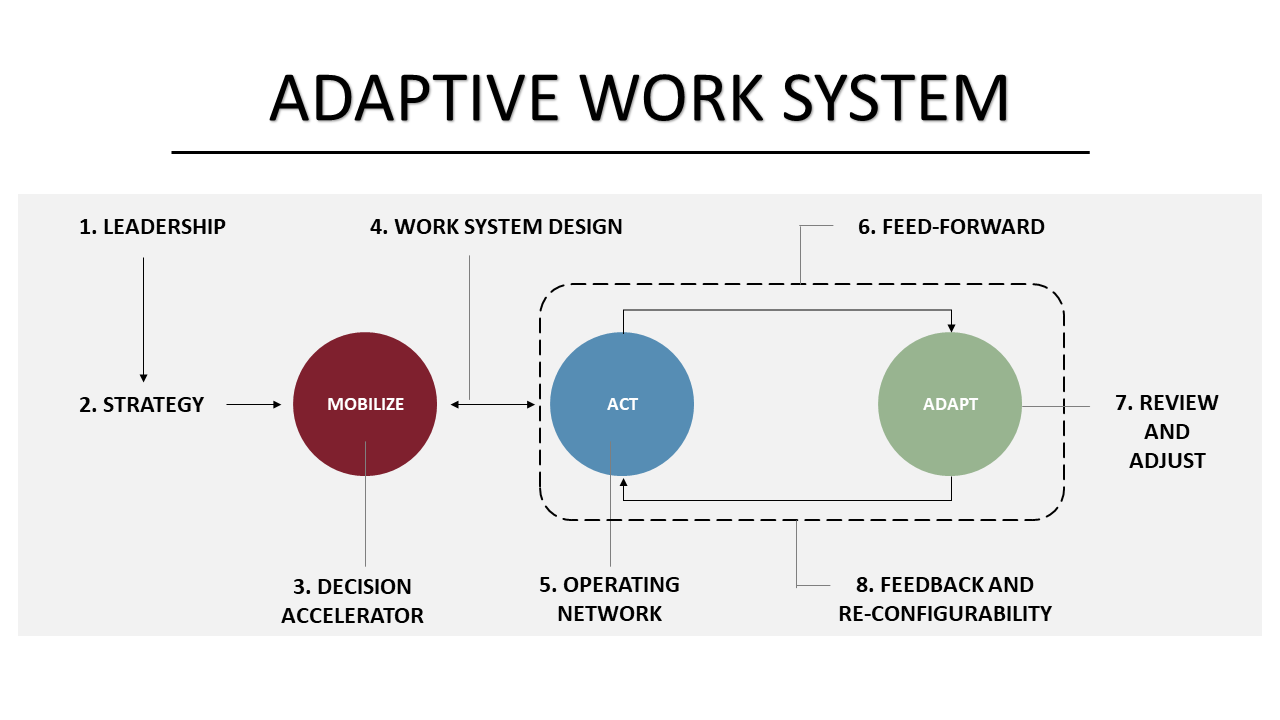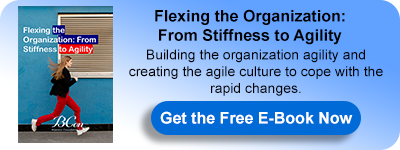From Concepts to Action: How to Build an Agile Organizational Workflow

The model shown above depicts the Adaptive Work Systems (AWS) paradigm, resulting from 15 years of practice, experience, and research. It establishes a management framework or "platform" for identifying, designing, producing, and disseminating various innovations. The model's primary processes include mobilizing, acting, and adjusting, and they are based on socio-technical system concepts. Leadership and strategy are critical components of mobilization. Executives, managers, and essential contributors demonstrate leadership by recognizing opportunities and devising methods to address them. Mobilizing is the act of bringing together diverse viewpoints to evaluate a strategy, a competitive challenge, an opportunity, a vision, or an innovative proposal.
The mobilizing process's outputs are subjected to an iterative cycle of action and modification that transforms plans and ideas into productive realities. The concept is scalable since anybody may use it, from individuals or small groups considering a problem-solving opportunity to huge groups developing and implementing creative tactics. A leadership team, for example, can see the need for change (1) and suggest the development of a new capability, strategy, or product to address market opportunities at the organizational level (2). The concept is presented to a large group of stakeholders in a decision accelerator (3), which results in a plan or work system design for group, resource, and process organization (4).
An operating network is made up of various task forces or "adaptive teams (5)," each of which focuses on their part of the plan, shares it with others (6), receives feedback on the quality of their part and how it matches with other parts (7), and makes improvements as needed (8). The process iterates through cycles of action and adaptation until the large group is ready to meet again to assess whether the strategy or innovation is viable and fits the customers' needs.
The AWS is a sophisticated management system that allows for extensive data processing and decision-making.
As a result, it has the potential to automate the development, formalization, and distribution of breakthroughs while also laying the groundwork for large-scale learning.
Information and decision processes are the methods by which management work is carried out in modern companies; in particular, management processes aid in setting direction, allocating scarce resources, and determining how the business executes strategy. The management procedures become more crucial when the environment becomes more uncertain, and the organization's structure becomes more complicated. Management processes create objective alignment within the organization and prioritize setting alignment across different dimensions.
This amount of communication, decision-making, and coordination is inherently difficult for traditional, functionally organized hierarchies. The importance and complexity of making these types of systems function have been highlighted by recent revelations regarding the length of time General Motors knew about the ignition problems and the difficulty of transmitting information across silos.
The AWS considers the organization to be a complex social system consisting of structures, people, information flows, and decision-making processes entrenched in an ever-changing environment. The model offers mechanisms in the act-and-adapt cycle that allow members of the organization to restructure human and knowledge assets in real-time.
This contrasts with traditional hierarchical routines, which place a greater emphasis on vertical work control. The ability of a company to apply this method frequently and for a variety of purposes can serve as the cornerstone of its agile management competence.
1Management processes for agility, speed, and innovation, Stuart Winby, Christopher G. Worley b, Accessed 20 April 2022, https://starlab-alliance.com/wp-content/uploads/2017/09/Mgmt-Processes-for-Agility-Speed-Innovation-Winby-and-Worley.pdf
For more about this topic, download our latest book " Flexing the Organization: From Stiffness to Agility " for FREE:
